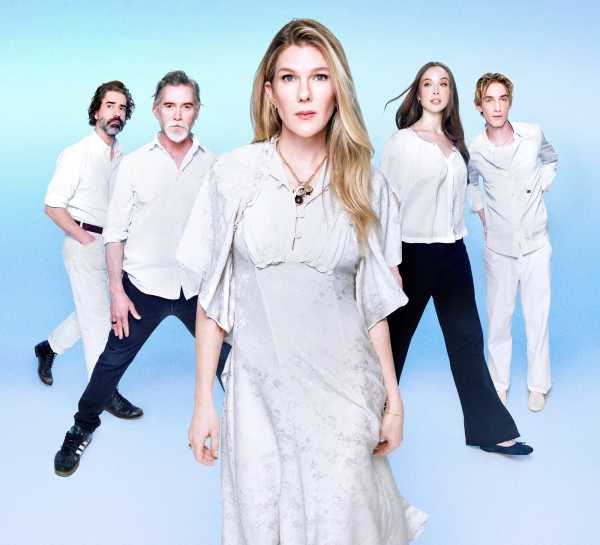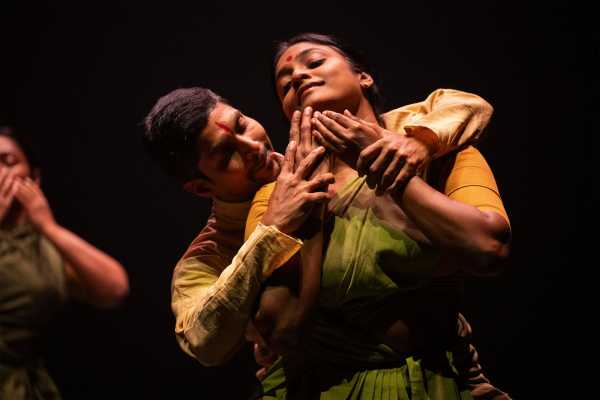
Save this storySave this storySave this storySave this story
Shauna Lyon
Editor, Goings On
You’re reading the Goings On newsletter, a guide to what we’re watching, listening to, and doing this week. Sign up to receive it in your in-box.
In anticipation of the hundredth anniversary of The New Yorker, I’ve been looking back at old issues, starting with the inaugural edition, dated February 21, 1925, which included the very first Goings On section. Its subtitle, a “conscientious calendar of events worth while,” announced the tone of the magazine, which was founded, by Harold Ross, as a “comic paper” promising “gaiety, wit, and satire.”
From the start, the calendar’s entries were informative and comprehensive, including theatre recaps, movies’ plots, the full opera schedule—but, more than that, they were often opinionated and dishy, sometimes catty, in their knowing critique. Goings On was at first just a page, covering the theatre, “moving pictures,” art, music, and charity balls, along with other miscellaneous events; eventually, over the years and across decades, it extended to pages and pages of listings and critiques, a veritable archive of New York City’s cultural life.
We are pleased and honored to continue the Goings On tradition, begun a hundred years ago—to cover the culture of New York City and beyond, bringing you word of the most notable and inspiring happenings and works of art on view right now.
Spotlight

Photograph by Pari Dukovic for The New YorkerTheatre
When Henrik Ibsen’s “Ghosts” débuted, in 1881, the public panicked. (It was a “farrago of syphilis and filth,” one shocked Norwegian critic wrote to another.) The plot, in which a woman suffers cruelly for her sexually profligate husband’s sins, takes place in a kind of house of horrors, where the hidden corruptions of one generation infect the next. The great Irish playwright Mark O’Rowe, whose verse drama “Terminus” featured a sex scene with a demon made up entirely of worms, applies his brutal, Joycean brio to a new English-language adaptation at Lincoln Center, directed by Jack O’Brien. The starry cast consists of Hamish Linklater, Billy Crudup, Lily Rabe, Ella Beatty, and Levon Hawke (pictured, left to right)—a group with many of its own familial ties to earlier generations of artists, and, in the case of the longtime partners Rabe and Linklater, to each other.—Helen Shaw (Mitzi E. Newhouse; previews begin Feb. 13.)

About Town
Art
When the great Ukrainian photographer Boris Mikhailov wasn’t making pictures of people he’d just met and of himself—awkwardly, sometimes alarmingly, naked—he was often prowling the back streets and alleyways of cities in ruins, both before and after the collapse of the U.S.S.R. Two series of panoramas from the early nineteen-nineties overlap in their atmosphere of grinding but utterly routine hopelessness. Tinting one series cobalt blue and the other a cloudy sepia, and leaving both unframed, Mikhailov emphasizes his prints’ rough physicality—an immediacy perfectly suited to the works’ immersion in urban despair. The artist, with his images of trash, snow, hulking dumpsters, milling crowds, and people waiting, wandering, and looking lost, lets us imagine a host of movies that never would have made it past the censors.—Vince Aletti (Marian Goodman; through Feb. 22.)
Rock
In recent years, Jack White has earned a reputation as a persnickety mastermind, a guitar god who is obsessive about both execution and presentation. Since the disbanding of the White Stripes, his duo with the drummer Meg White, he has meticulously managed an increasingly experimental catalogue, recording on analog equipment, using instruments tailored to individual projects, and self-releasing his albums through his vinyl label, Third Man Records. This past year, in a move that felt a bit like a reset, he surprise-released his sixth LP, “No Name,” without fanfare. Produced, written, and recorded by White, it turns loose his unrivalled attention to detail on rowdy blues punk that evokes the Stripes’ glory days.—Sheldon Pearce (Brooklyn Paramount; Feb. 12.)
Dance

Photograph by Camilla Greenwell
Over the years, the choreographer Akram Khan—British, of Bangladeshi descent—has developed a mercurial and explosive dance language that draws heavily from his training in the Indian form kathak. He is also an avid collaborator, working, and trading steps, with dancers of various traditions, including ballet (Sylvie Guillem and Tamara Rojo), European contemporary dance (Sidi Larbi Cherkaoui), and flamenco (Israel Galván). More recently, he has returned to his roots in Indian dance, holding a series of master classes for practitioners of forms including bharata natyam and kathak. The result of this immersion is “Gigenis,” a work for seven Indian classical dancers—including Khan—that explores themes from the Mahabharata, reinterpreted by Khan as the story of a woman (played by Kapila Venu) who loses both her husband and her son to war.—Marina Harss (Joyce Theatre; Feb. 12-16.)
Off Broadway
In Jordan Harrison’s far-future “The Antiquities,” directed by David Cromer and Caitlin Sullivan, two post-organic intelligences (Kristen Sieh and Amelia Workman) welcome us to a museum of extinct humanity. Its living exhibits show moments from mankind’s relationship with technology: Mary Shelley (Sieh) mourns a child while giving Frankenstein’s monster life; a lonely nineteen-seventies roboticist (Ryan Spahn) calls his creation fondly by name; humans lose the robot war. Harrison’s time-hopping “Cloud Atlas” approach falters as he moves into the future; his drumbeat rhythm grows monotonous, and his lovely, precisely observed dialogue gives way to pontificating. “Much of human life seemingly existed in the chasm of accident between a Zero and a One,” a disembodied voice tells us. Maybe, but my response here was binary—positive, till it wasn’t.—H.S. (Playwrights Horizons; through Feb. 23.)
Classical

Yuja Wang and Víkingur Ólafsson.
Photographs courtesy BBC Studios / Carnegie Hall
Best of luck to anyone who has to share a stage with the pianist Yuja Wang. Her superstar presence is hard to compete with; her bows alone snap so ferociously that they produce a wind capable of ruffling a front-row toupée. But Wang’s fellow-pianist Víkingur Ólafsson has done well with this fate: though he may look like the philosophy nerd to Wang’s head cheerleader, his playing is charismatic, captivating, and more than fit to hold its own. Continuing a stretch of performances as a duo, Wang and Ólafsson grace Carnegie’s Keyboard Virtuosos series, presenting Schubert’s four-handed classic Fantasie in F Minor, alongside a selection of two-piano pieces, including “Hymn to a Great City,” by Arvo Pärt; “Hallelujah Junction,” by John Adams; and “Experiences No. 1,” by John Cage. Hold tight to your hair—there’ll be two bodies bowing.—Jane Bua (Carnegie Hall; Feb. 19.)
Movies
Short films are ideal for streaming, and the Criterion Channel maintains an ample and growing collection of them. Among the new offerings are two by Billy Woodberry, whose sole fiction feature to date, the classic “Bless Their Little Hearts,” is also available there. His short 1980 drama, “The Pocketbook,” based on a story by Langston Hughes, involves an adolescent (Ray Cherry) trying to steal a handbag from a woman, played by Ella (Simi) Nelson, who catches him in the act. The movie, shot in raw-rubbed black-and-white and featuring performances of pensive depth, feels timeless, wrenched from history and experience. In the documentary “Marseille après la guerre” (2005), Woodberry uses still photos in startling ways to evoke the great Senegalese filmmaker Ousmane Sembène’s pre-directorial years, in the nineteen-forties and fifties, as a laborer and a novelist in France.—Richard Brody
Folk Rock
The singer-songwriter and guitarist Lucy Dacus has become one of the most essential voices in modern indie rock. After appearing, fully formed, on her 2016 début, “No Burden,” the 2018 follow-up, “Historian,” marked her as an incisive, accepting storyteller, excavating memories of loss and examining them with clear eyes. In recent years, Dacus has joined forces with the fellow sensitive indie savants Julien Baker and Phoebe Bridgers, in the supergroup boygenius, a union that scored her three Grammys. She emerges from that experience, after an announced hiatus, with a new album this March, called “Forever Is a Feeling,” her first solo in nearly four years. After much personal archiving, Dacus’s music pivots toward the interpersonal, ruminating on the eternal sensations of an ephemeral romance.—S.P. (St. Ann & the Holy Trinity Church; Feb. 18.)

Looking Back
Goings On has been a part of the magazine since its very first issue. Titled “GOINGS ON: The New Yorker’s conscientious calendar of events worth while,” the section featured listings for the theatre, art, movies, music, and junior-league balls which were omniscient, quippy, incredibly cheeky, and brutally incisive. Here, from the February 21, 1925, issue, are some particularly piquant reminders of shows past.
THE THEATRE
The Firebrand, Morosco Theatre
A highly costumed farce, based on some of the dandy times had by Benvenuto Cellini and a couple of local girl friends. As fresh, amusing, and full of beds as if the scene were laid on Long Island. More so.
The Music Box Revue, Music Box
The fourth of these annual rhapsodies in expense. With Fannie Brice, Bobby Clarke, and practically everybody else.
Big Boy, Winter Garden
Al Jolson in it. What more do you want?
Patience, Greenwich Village Theatre
A revival of one of Gilbert and Sullivan’s finest, done with understanding, imagination, and taste. Not a voice in the company, but you’d be surprised how much that doesn’t matter.
MOVING PICTURES
The Lost World, Astor Theatre
Through camera trickery, dinosauri and other beasts of the prehistoric past live again. Interesting because it proves that the camera is a liar.
ART
Grand Central Galleries
Retrospective exhibition of British Painting in its last week. A poor exhibition with a few high lights.
Joseph Stella
Dudensing Galleries. A series of drawings and some of the decorative paintings by this gifted young American. Nothing quite like Stella among contemporaries.
MUSIC
League of Composers, Aeolian Hall
Some of it will be good (perhaps Gruenberg’s “Daniel Jazz”), some of it won’t, but it’ll start something.
P.S. Good stuff on the Internet:
-
Downward-dog dog
-
Cool science stories
-
An office proposal
Sourse: newyorker.com